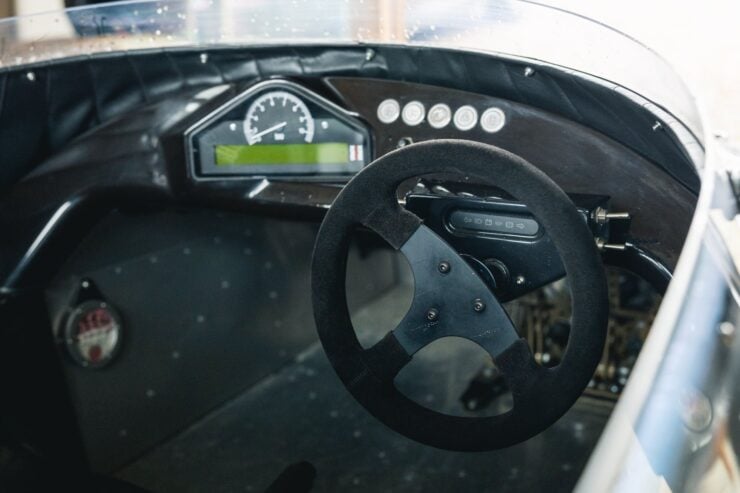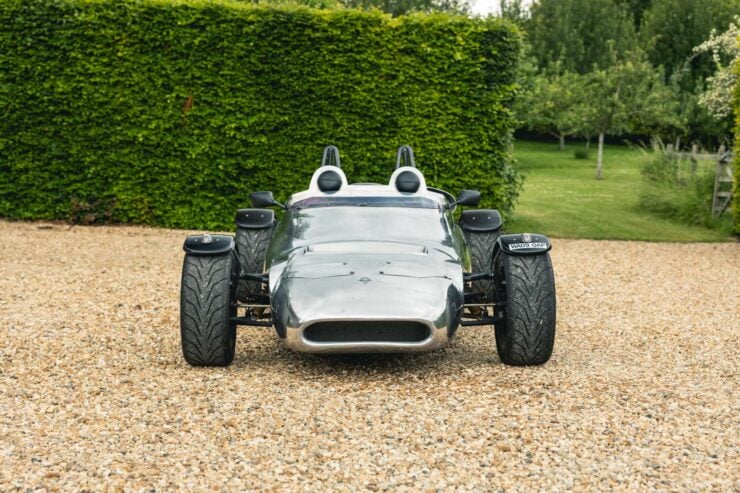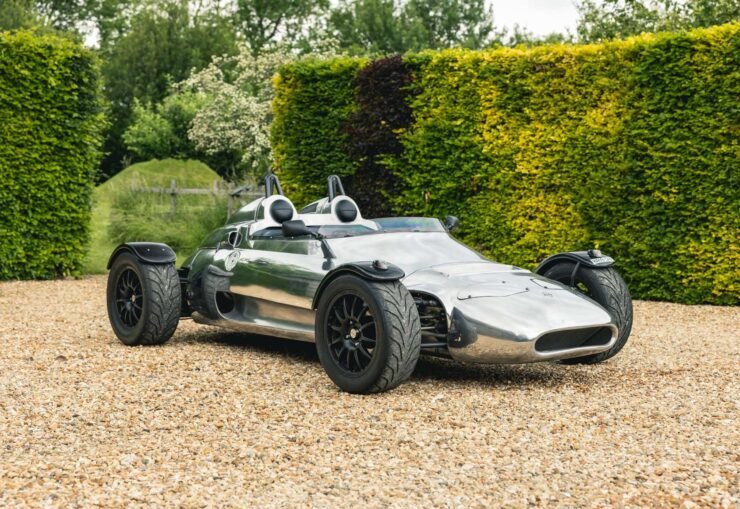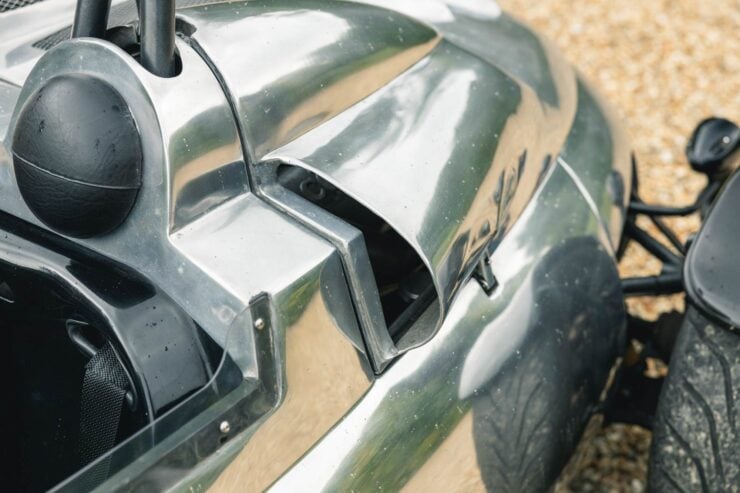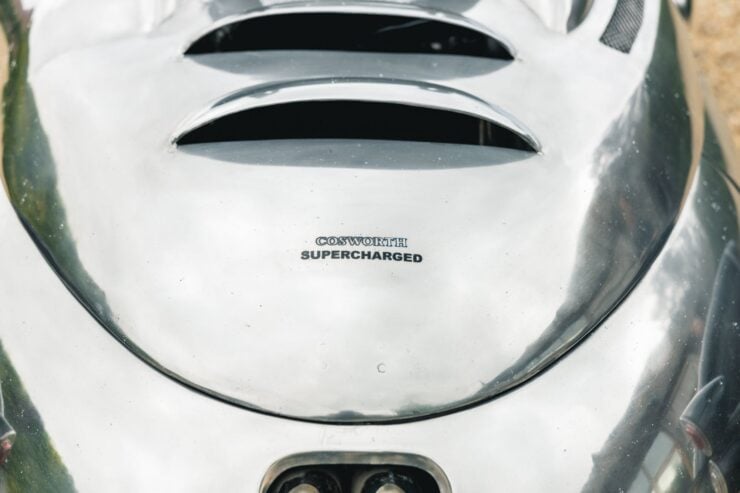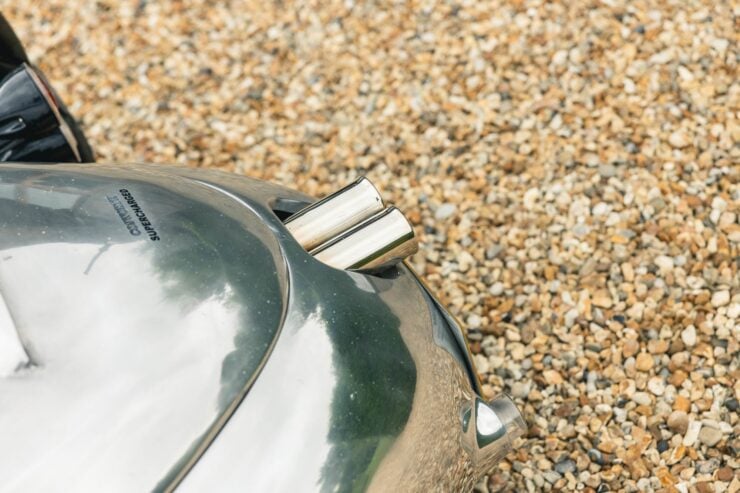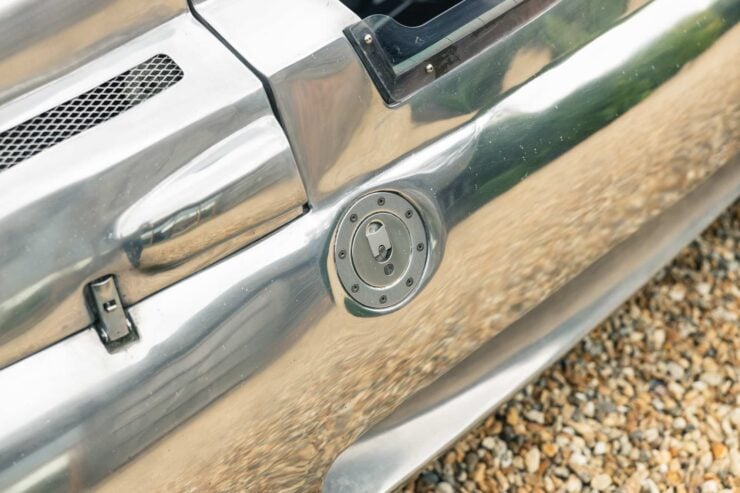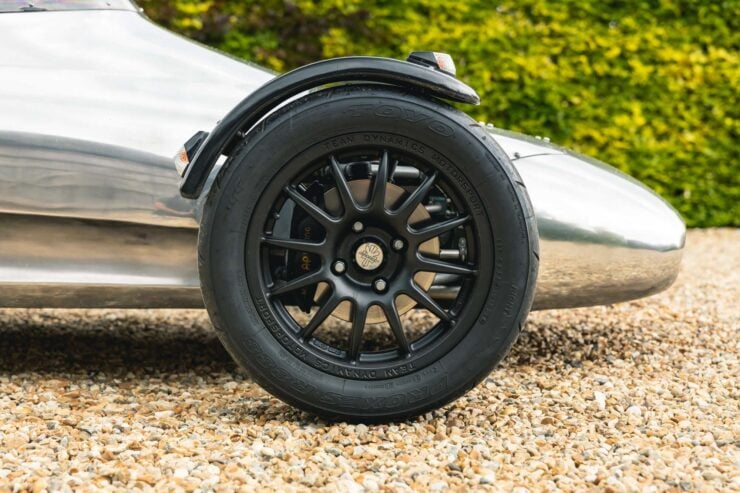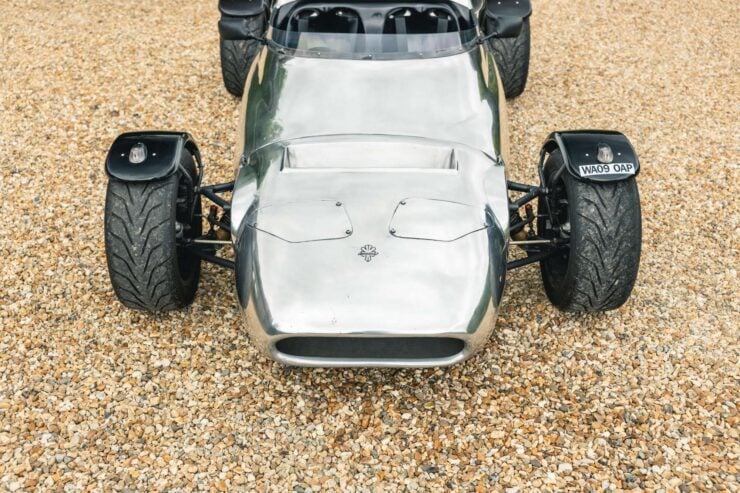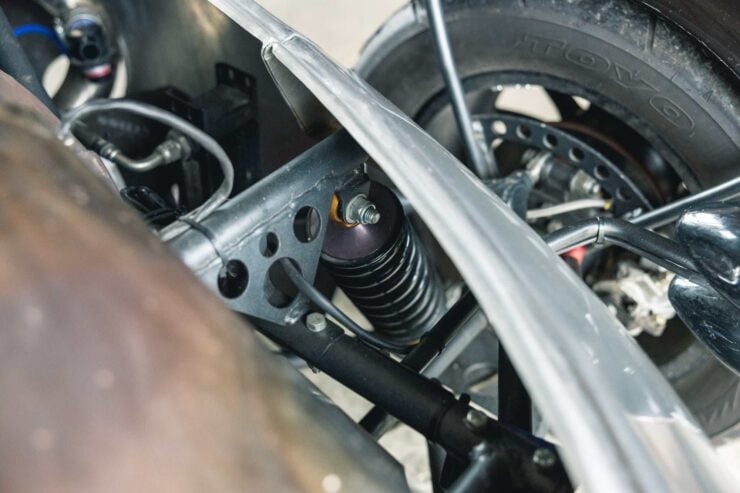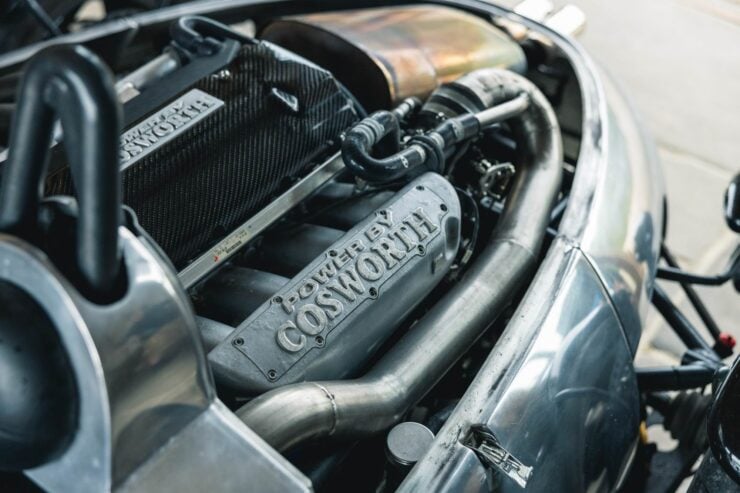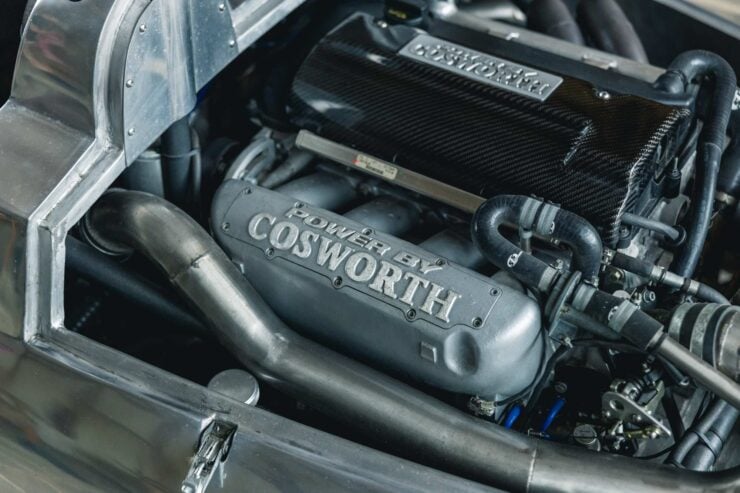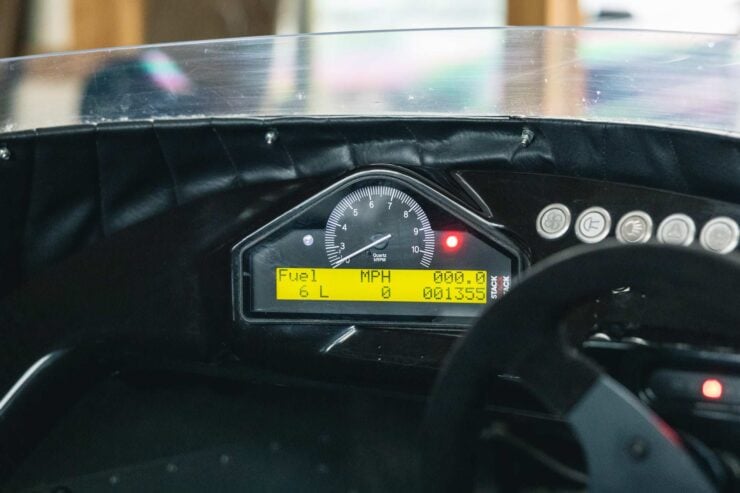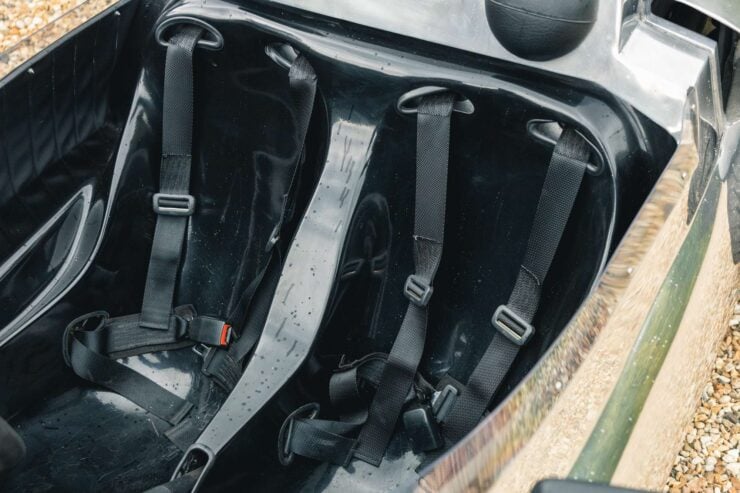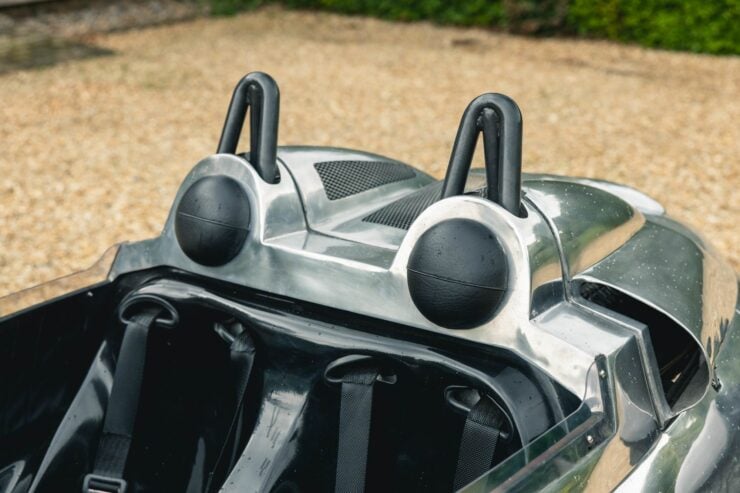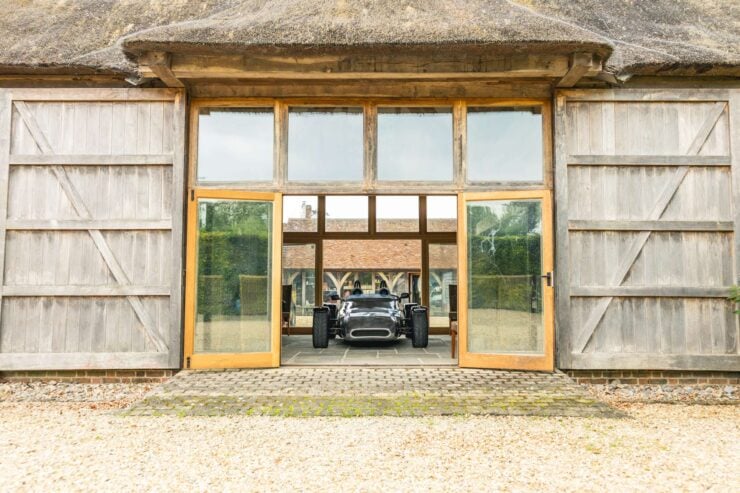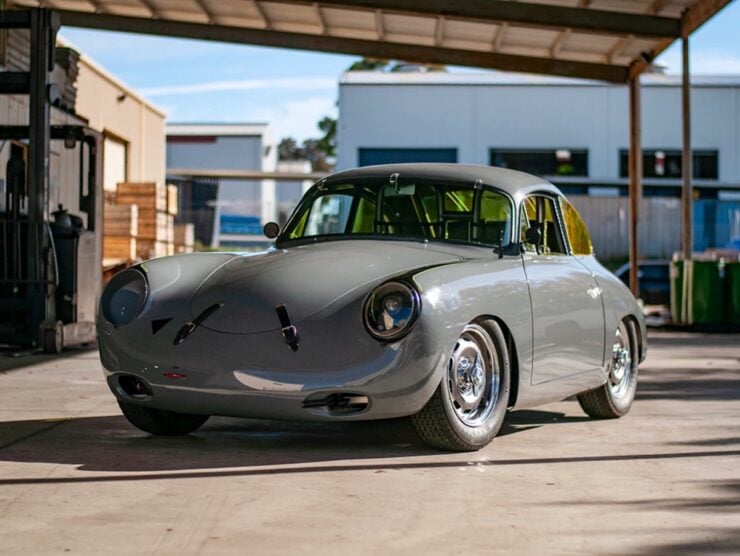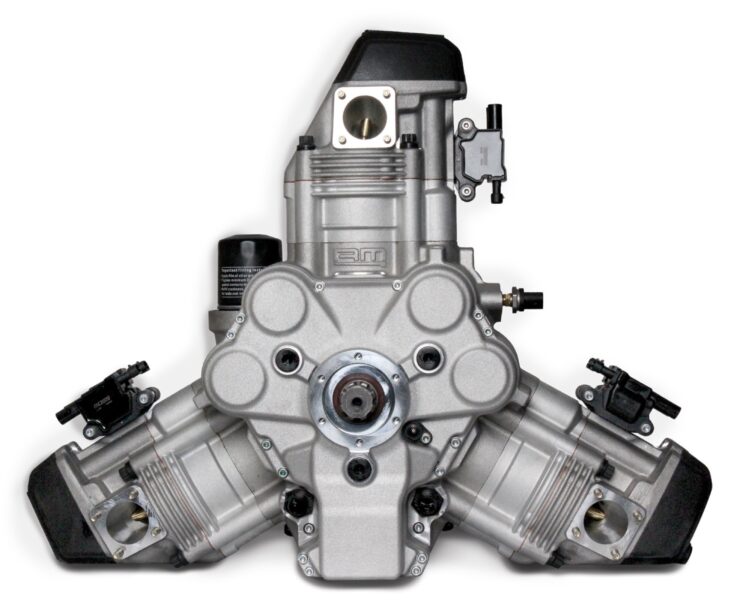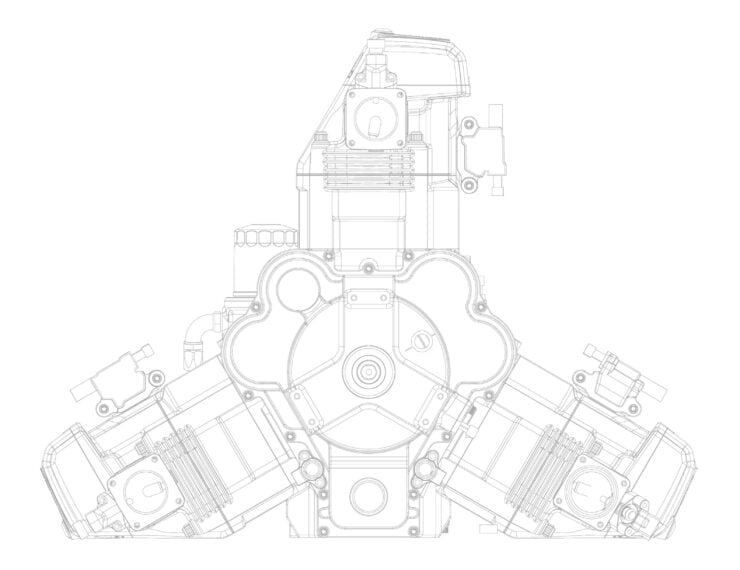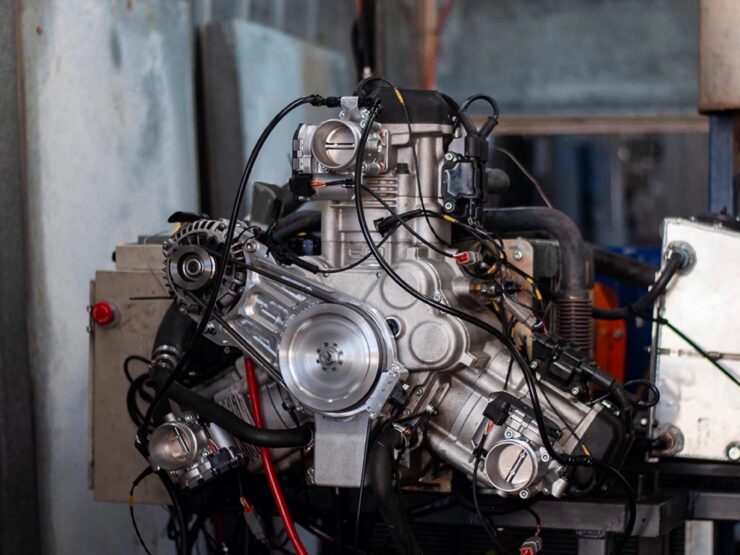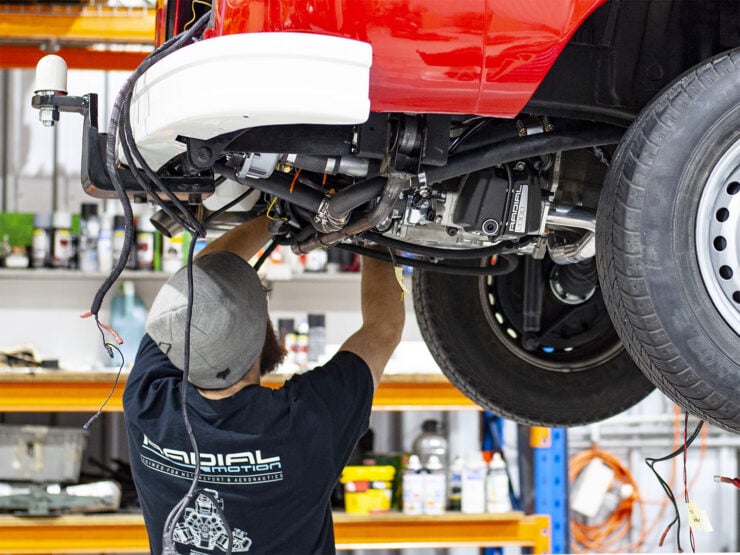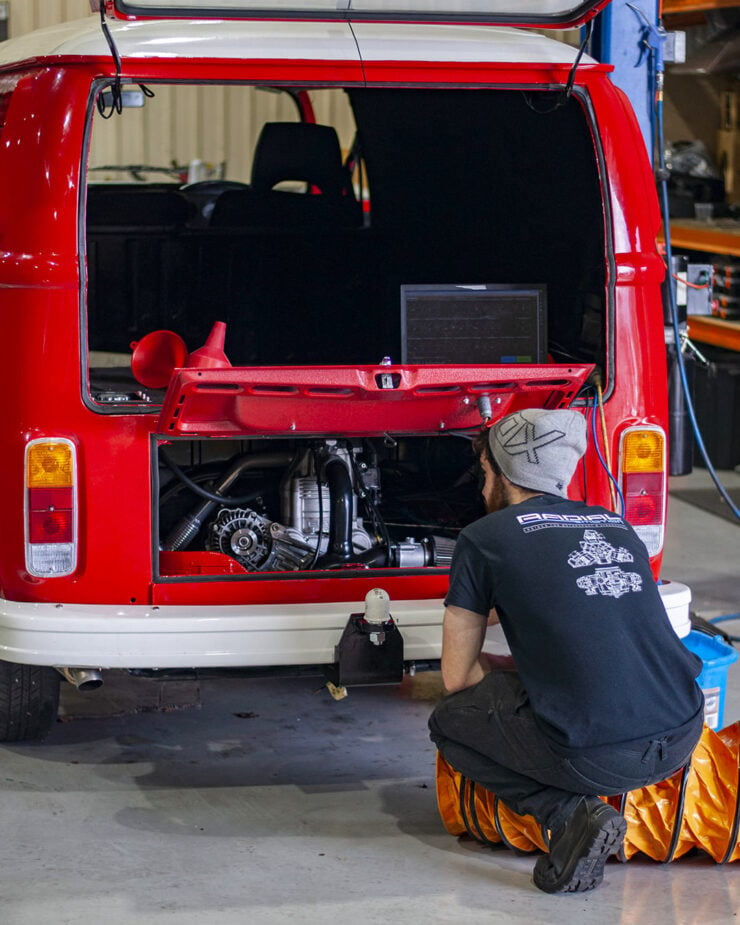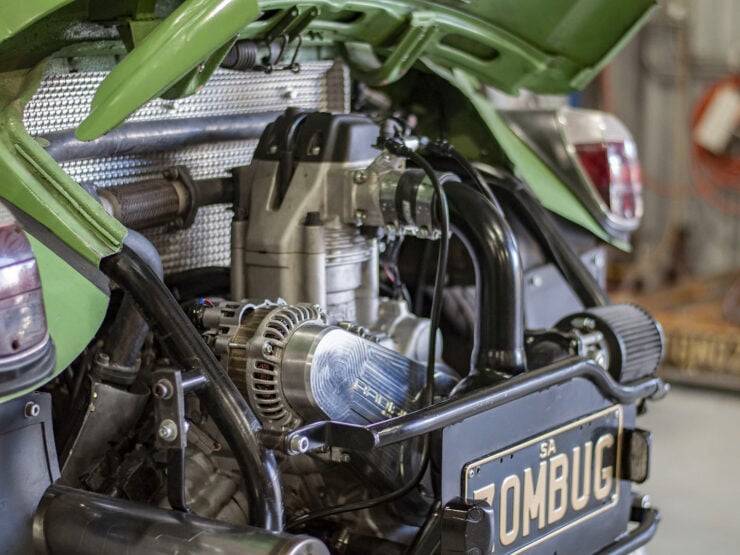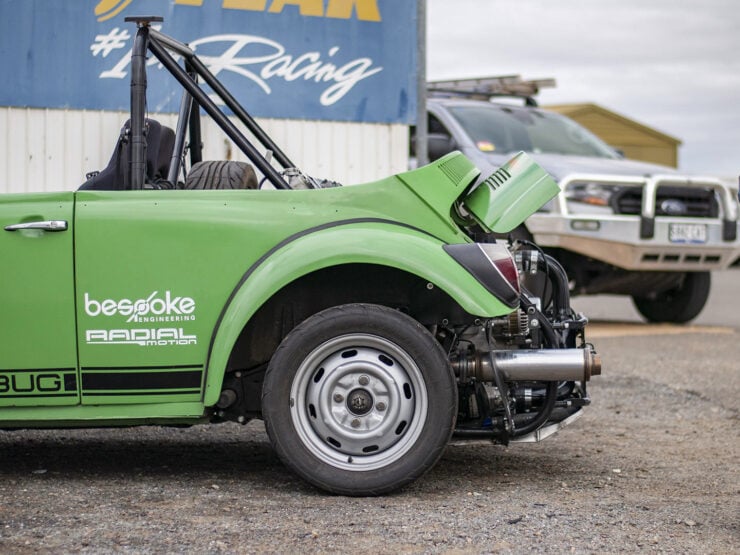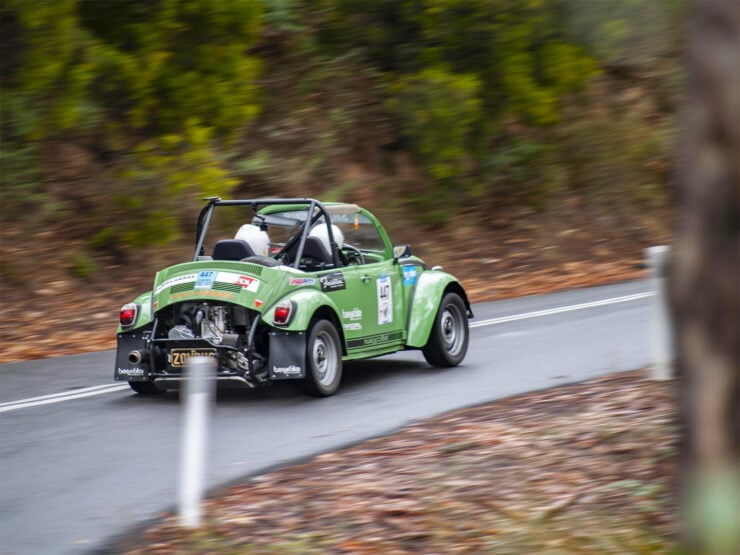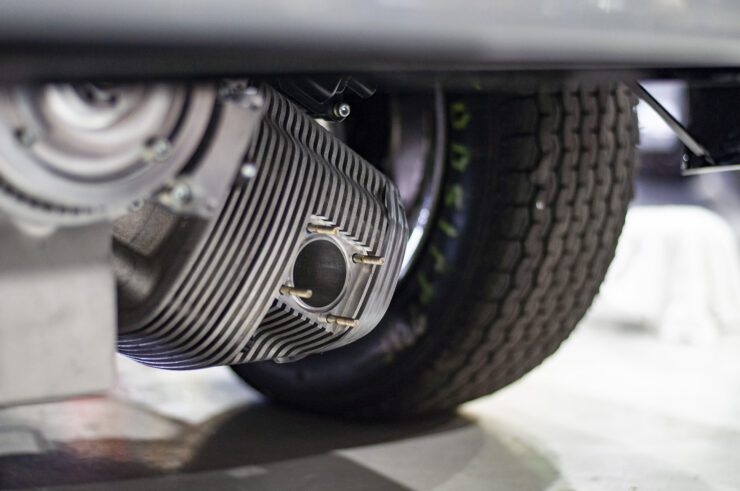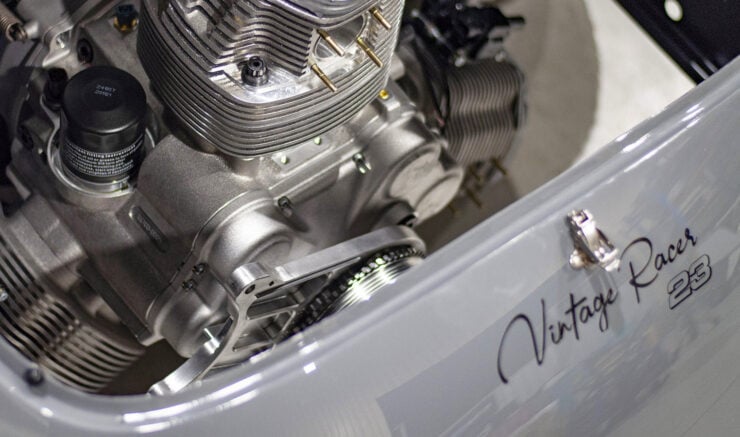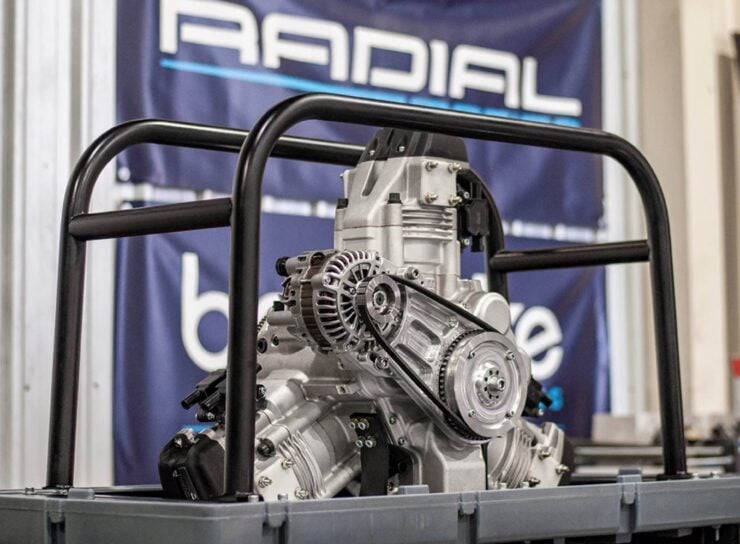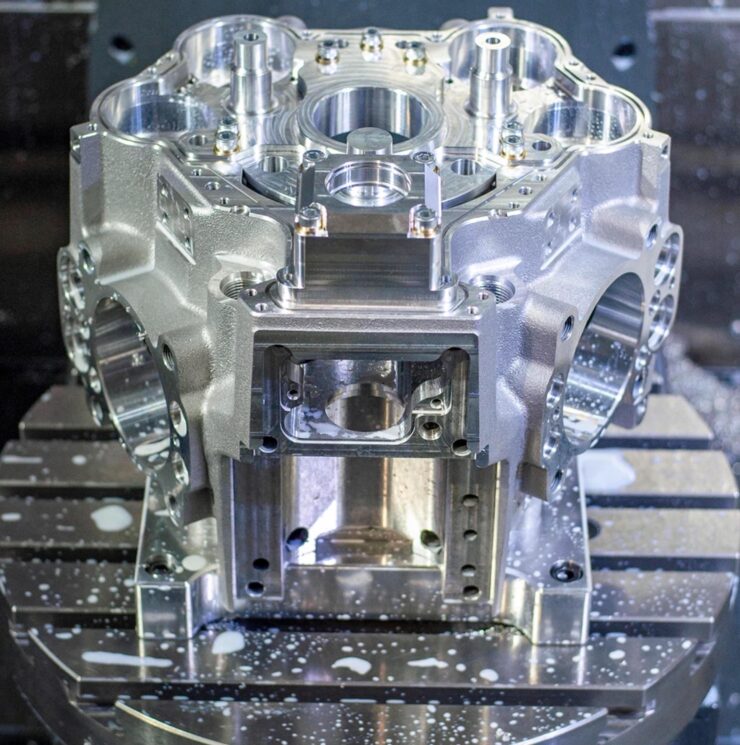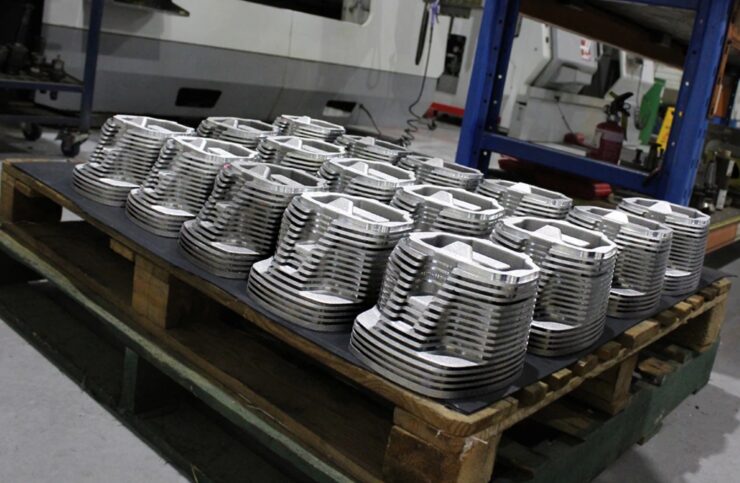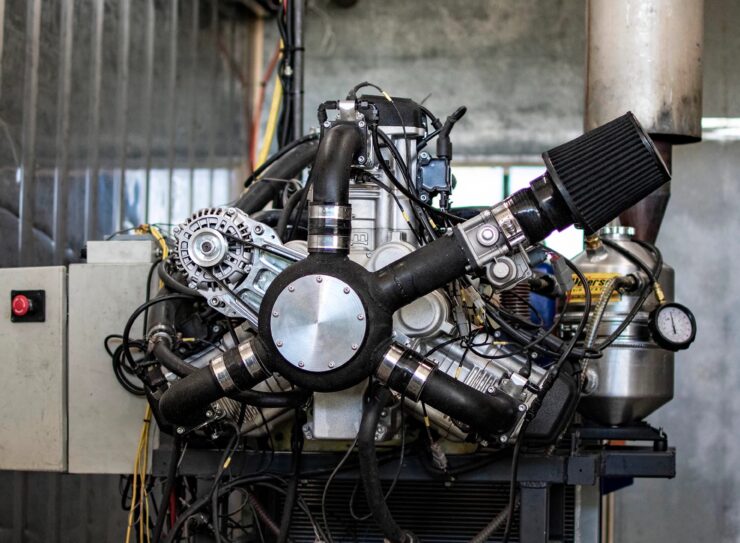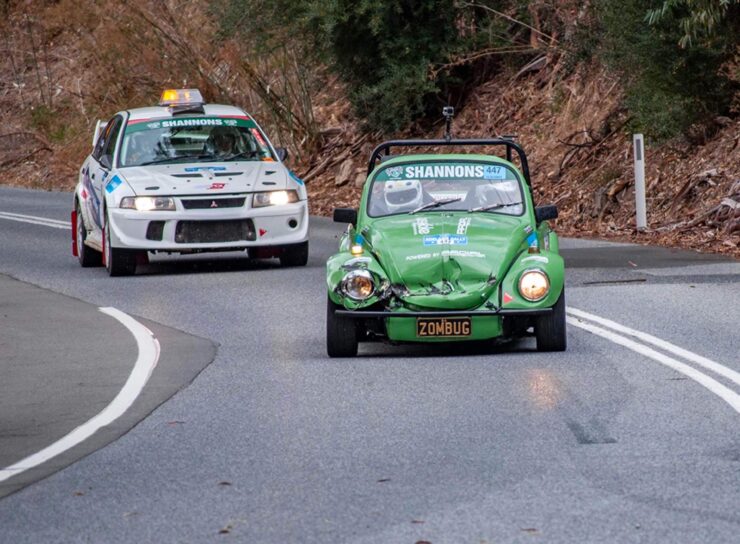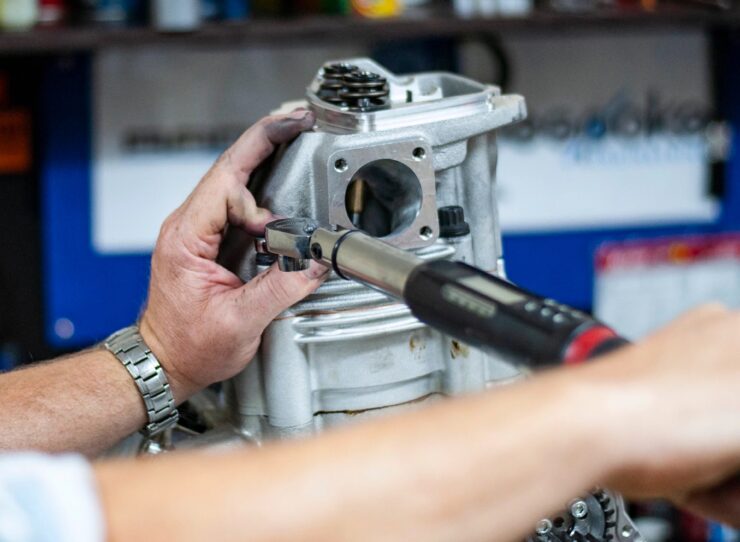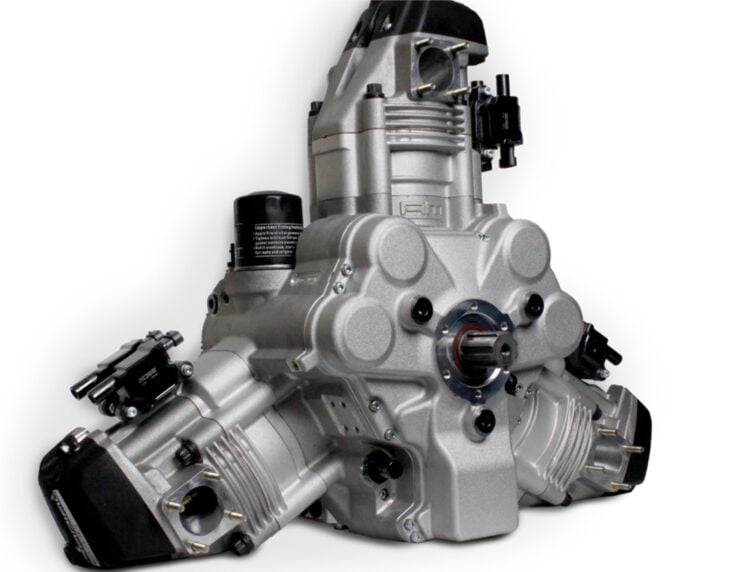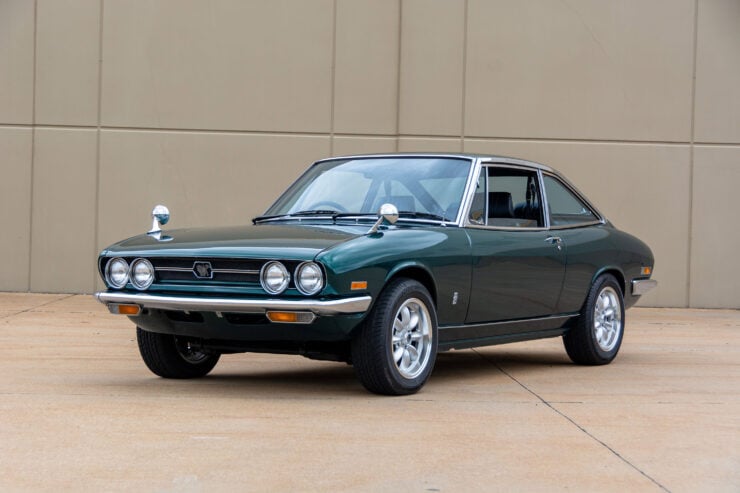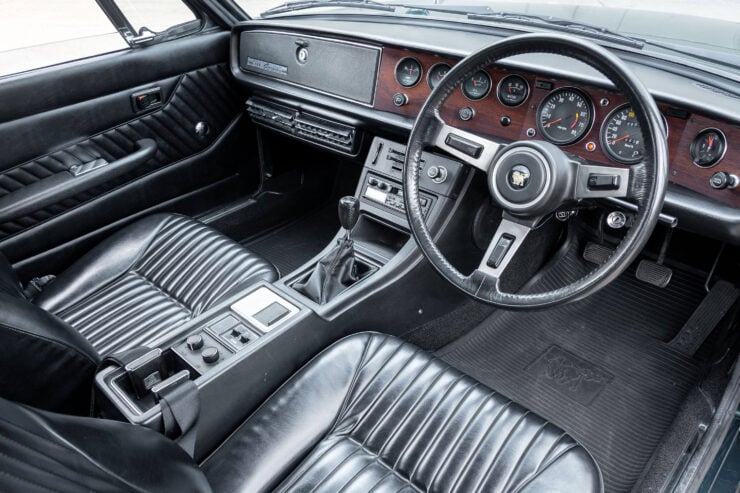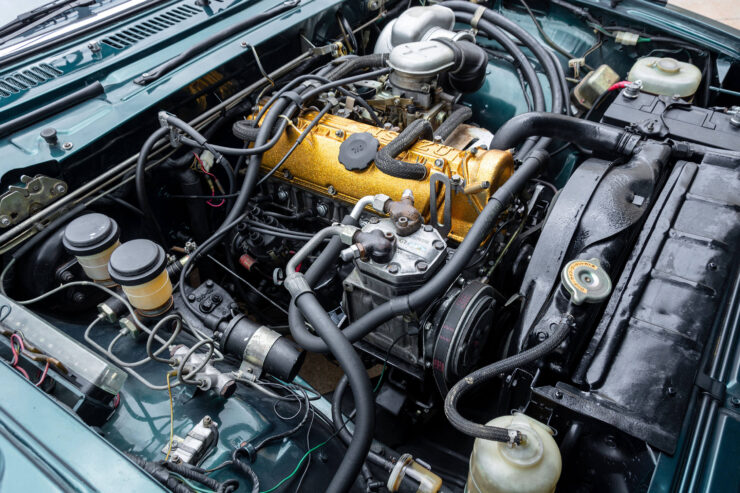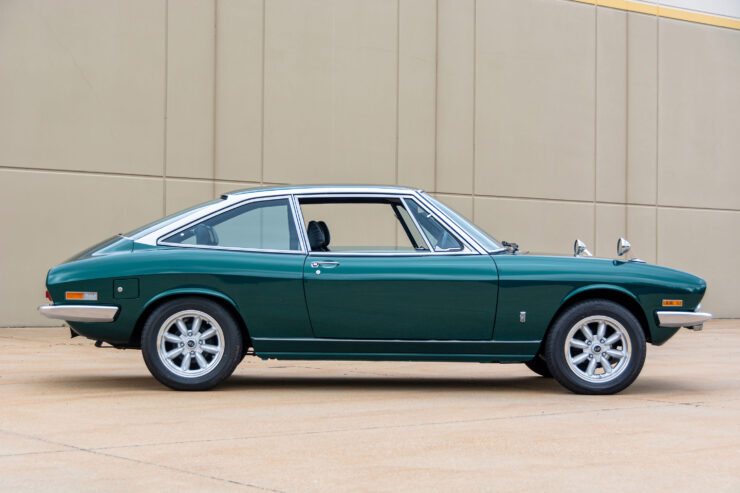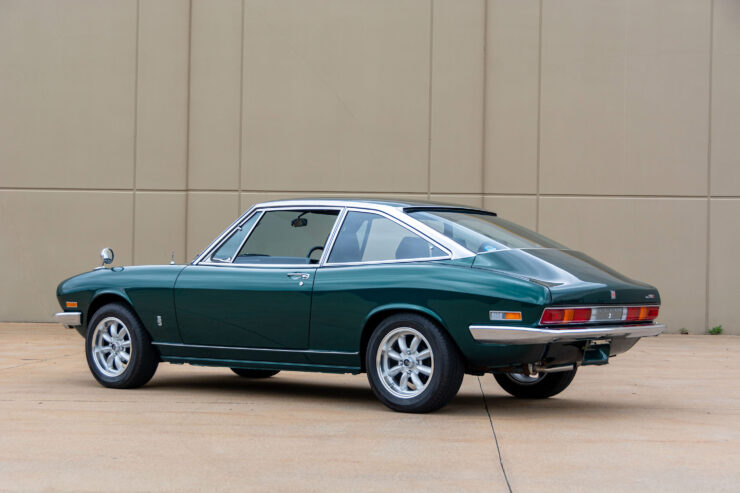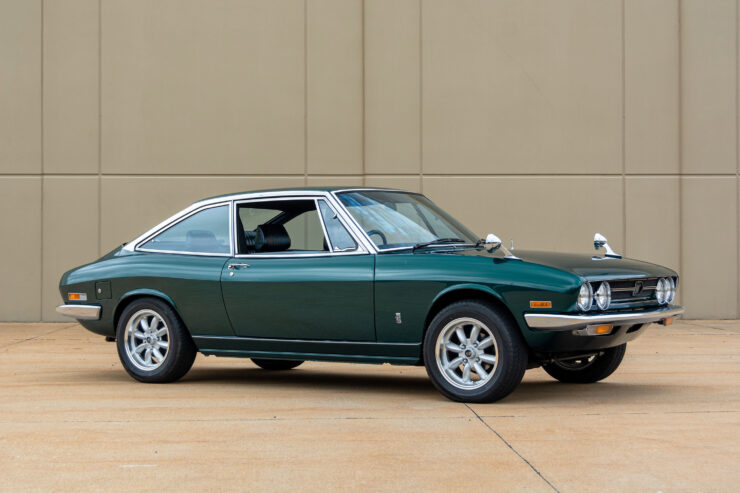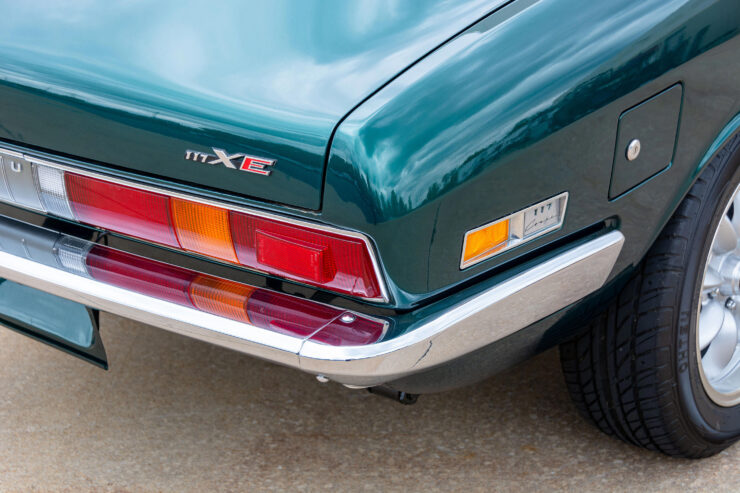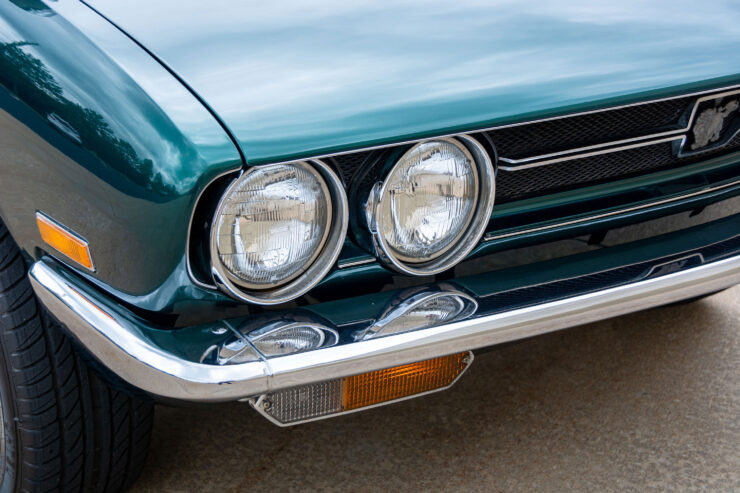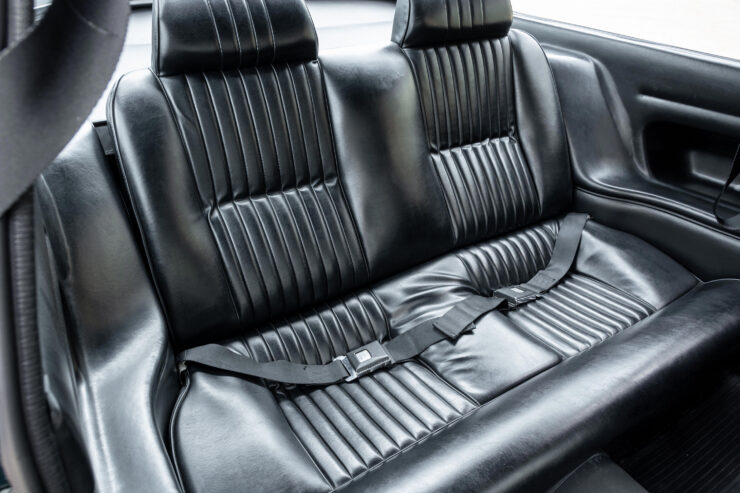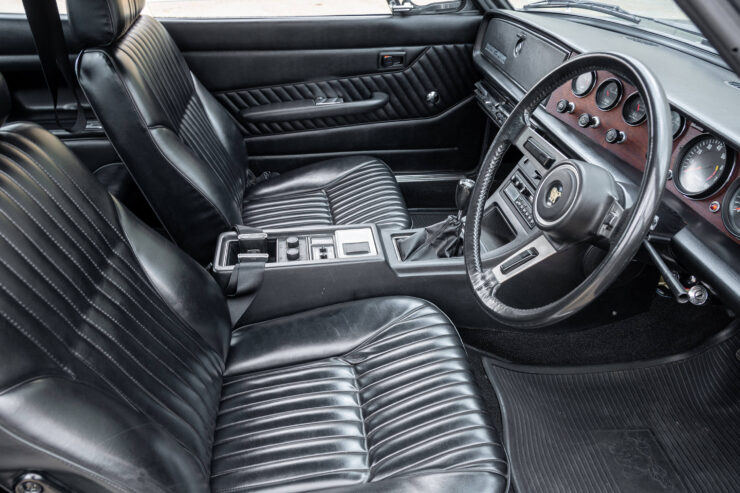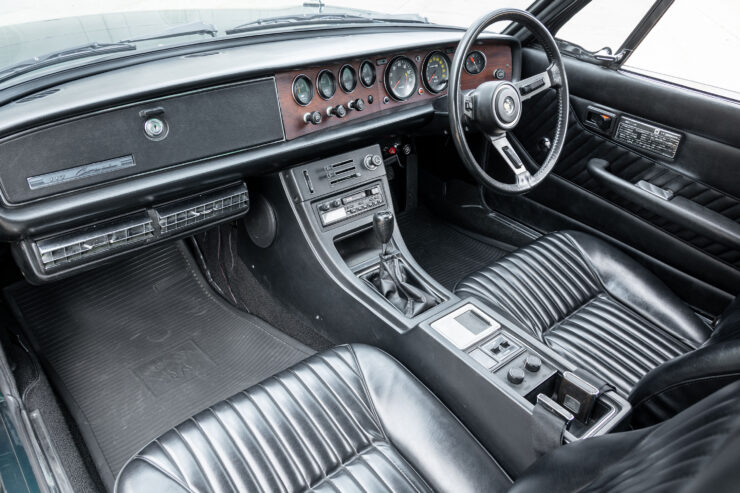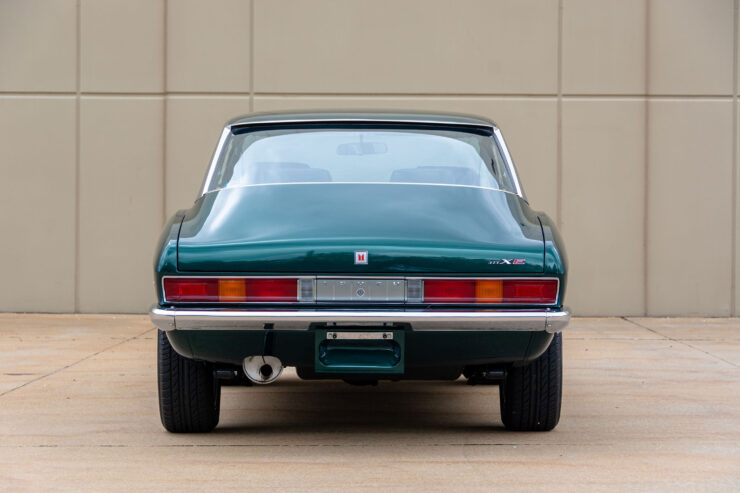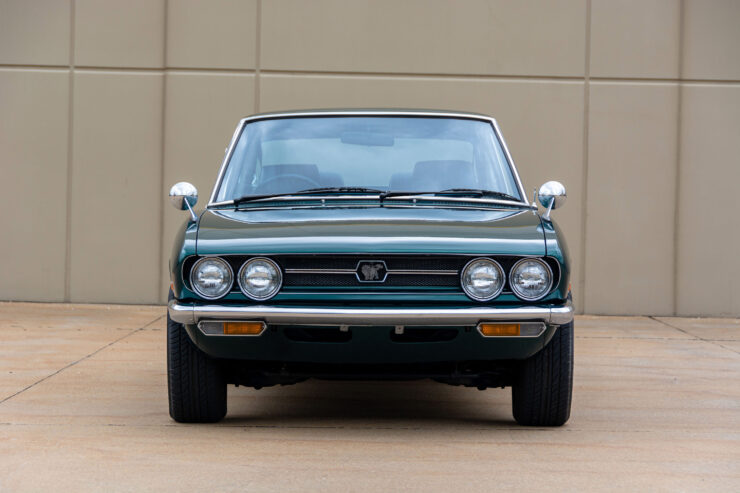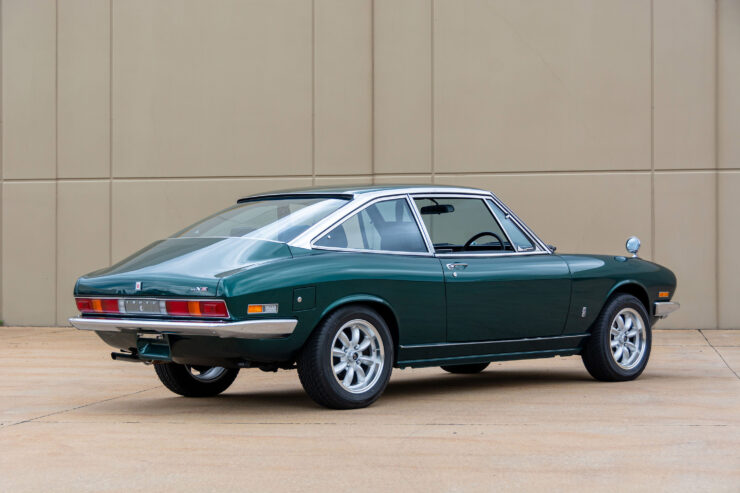This is a Brooke Cosworth Double R, it’s a lightweight sports car that tips the scales at just 510 kgs (1,124 lbs) and it’s powered by a supercharged 400 bhp 2.3 liter Cosworth/Duratec inline-four cylinder engine.
Fast Facts – The Brooke Cosworth Double R
✱ With 400 bhp and a curb weight of 510 kilograms, the Brooke Cosworth Double R can go from 0 to 60 mph in under 3 seconds, and 0 to 100 mph in 6.5 seconds.
✱ Just 15 examples of the Double R were ever made.
✱ The Brooke has a tubular spaceframe chassis and this was the only one built with an alloy body – a £15,000 option over the regular car.
✱ The car can accommodate drivers up to 6’4,” thanks in part to adjustable CNC machined pedals.
✱ The Cosworth Double R has on track performance on par or greater than most supercars, at a vastly reduced cost.
The Brooke Cosworth Double R
In 2006 Brooke Cars released a completely redesigned car called the Brooke 260 Double R, it was destined to be a direct competitor for the ultra-lightweight sports cars built by companies like Caterham and Ariel.
The 260 Double R is essentially the naturally aspirated version of the car you see here, it left the factory with a 260 bhp Cosworth-tuned 2.3 liter four-cylinder engine.
The engine mid-mounted behind the driver and passenger, it’s installed longitudinally and it feeds power into a 5-speed transaxle rear end through a Quaife limited-slip differential.
Above Image: The engine is rear-mid mounted and power is sent to the rear wheels via a 5-speed transmission and a limited-slip differential.
As you may expect the car uses all-round independent adjustable double wishbone suspension, allowing you to set it up for the track, the street, or some combination of the two. One of the keys to the design of the Brooke Double R is the obsessive, Lotus-like fixation on weight reduction.
The car has no roof or side windows, and things like heaters, air-conditioners, stereos, and heated seats never even got a look in.
The Brooke’s closest rivals are the above mentioned Caterham 7 and Ariel Atom, though it probably has more in common with the Atom given the fact that you can order a 7 with a folding roof and side windows, making it almost practical.
Although some do use these cars as daily drivers it’s not really what they were designed for. These are ideal second or third cars for use on sunny afternoons and trackday weekends, and probably not the sort of thing you’d want to be driving stuck in traffic on the M5.
The Brooke 260 Double R originally started life all the way back in the 1990s when the company was known as Brooke Kensington, and the car was the Brooke Kensington ME 190.
The company was sold in the early 2000s and its new owners completely reengineered the car, to the point where there were apparently no interchangeable parts, despite the fact that outwardly the cars did still look quite similar.
Above Image: The Spartan cockpit has seating for two but it’s designed for low weight and speed, so don’t expect any creature comforts.
The most extreme iteration of this new vehicle from Brooke Cars was the model you see here, the supercharged Brooke Cosworth Double R capable of 400 bhp and powered by an engine that was assembled by the same technicians who built the Cosworth Formula 1 engines of the period.
While it does seem borderline insane to have that much power in a car that weighs slightly less than an economy-sized bucket of popcorn, it does create an entirely unique driving experience – with the wind in your hair, the bugs in your teeth, and the delicate sound of supercar-owner’s tears falling to the asphalt after you’ve spend the afternoon embarrassing them around Silverstone.
Just 15 examples of the Double R were made, and this is the only one with the £15,000 alloy body option, making it entirely unique.
It’s currently being auctioned live by Collecting Cars, there are two days remaining and the bidding is sitting at £22,250, which works out to roughly $30,700 USD.
If you’d like to read more about this car or register to bid you can click here to visit the listing.
Images courtesy of Collecting Cars
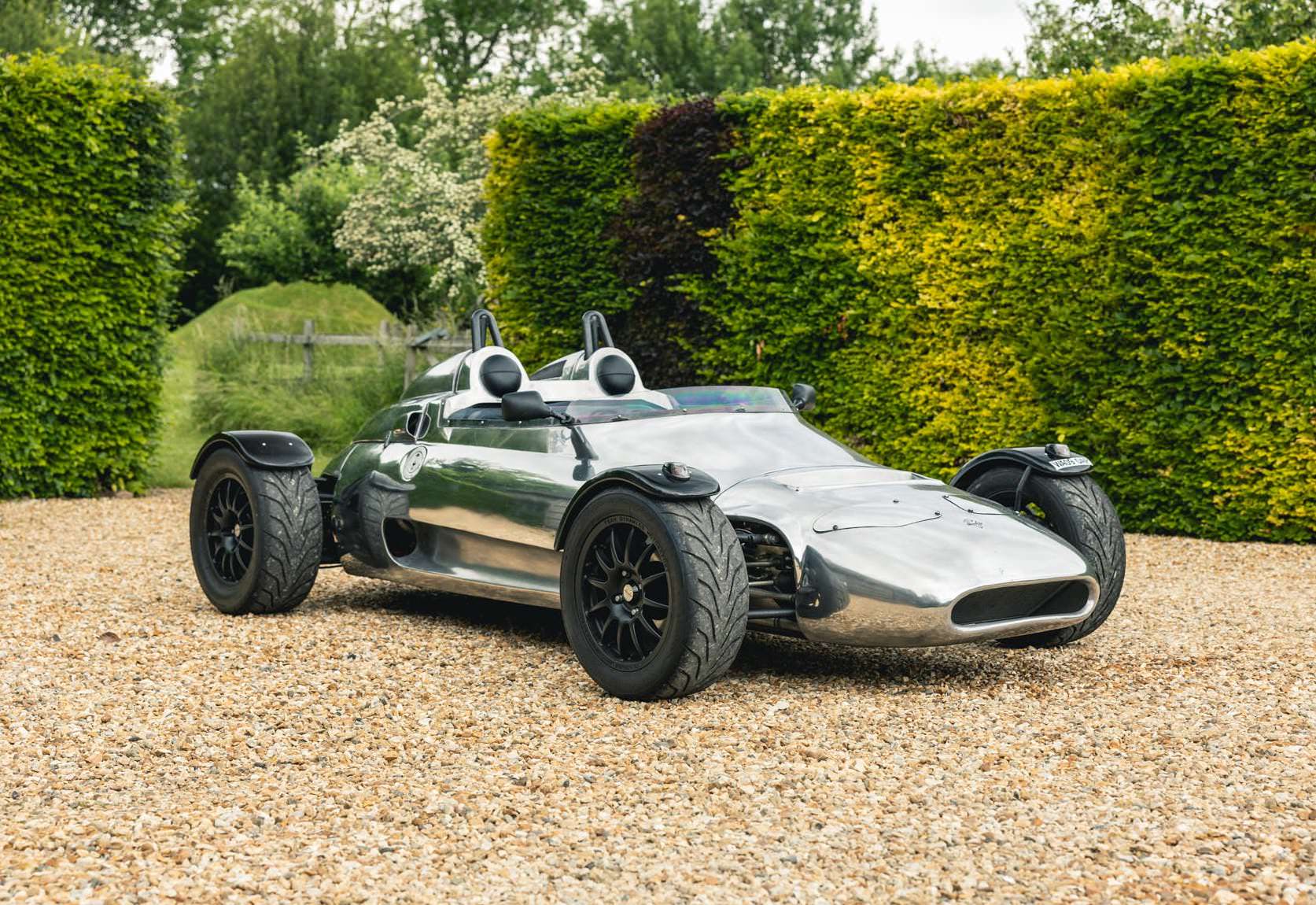
The post For Sale: A Rare, Road-Legal Brooke Cosworth Double R appeared first on Silodrome.
from Silodrome https://silodrome.com/brooke-cosworth-double-r/
via gqrds

